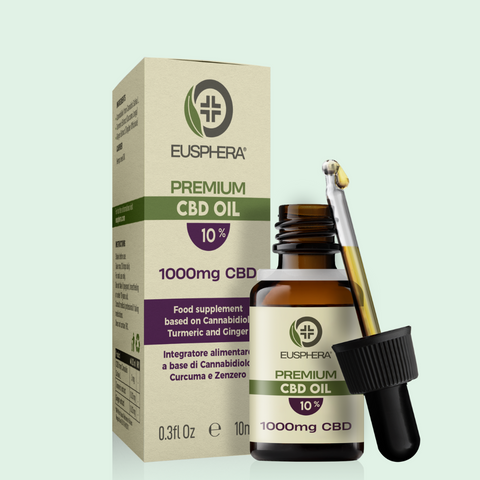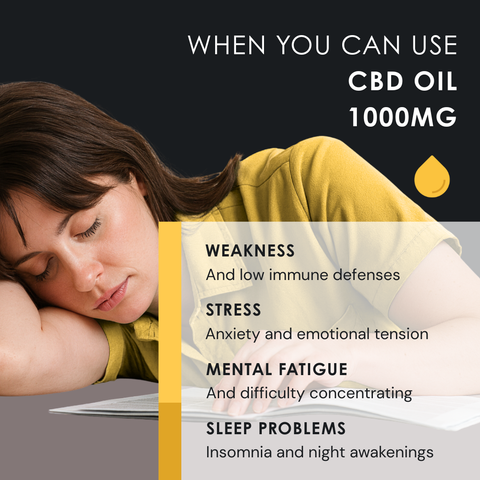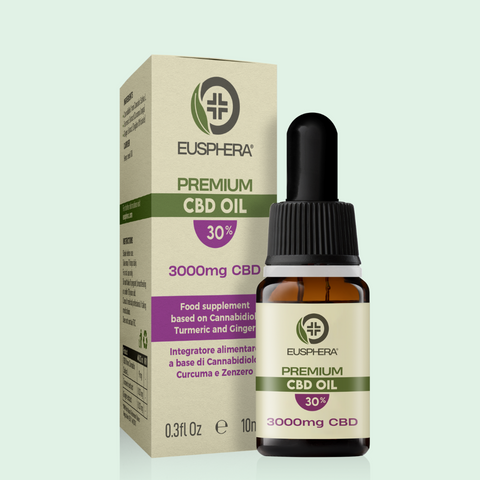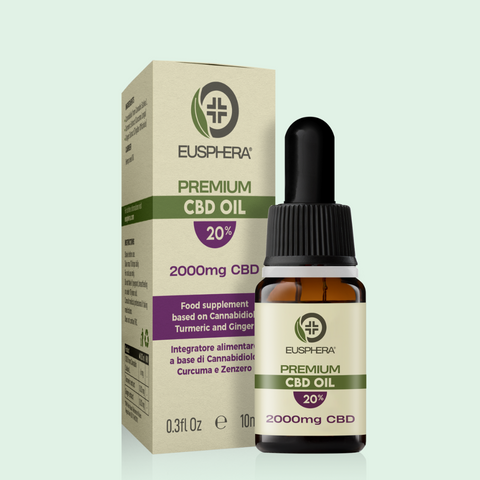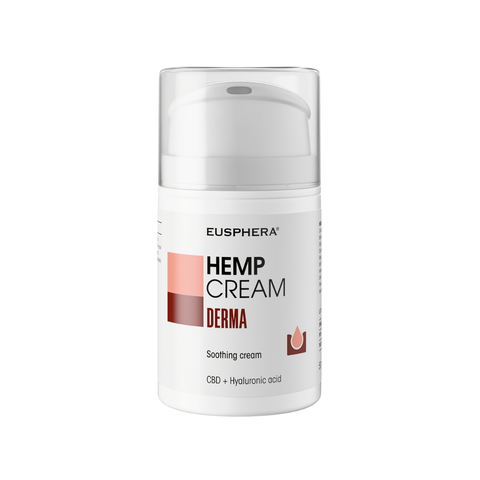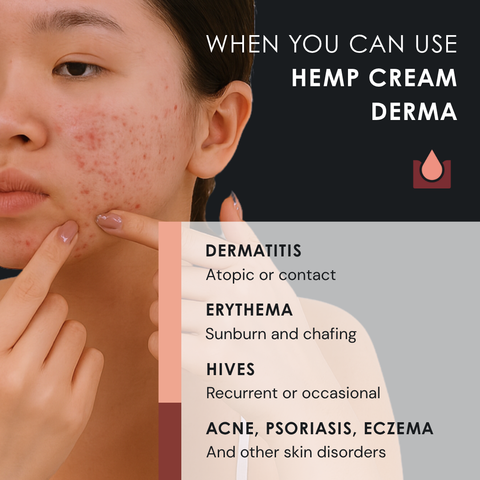Shingles is a skin rash caused by the Varicella Zoster Virus (VZV), the same virus responsible for chickenpox. After recovery from chickenpox, the virus can remain dormant in the nervous system for years and may reactivate later in life, leading to herpes zoster, commonly known as shingles.
This condition can be extremely painful and debilitating. With the growing popularity of cannabidiol (CBD) for treating various medical conditions, many wonder whether it can also be helpful in this case. In this article, we’ll explore the potential benefits of CBD for shingles, examining its effects on pain, inflammation, and the nervous system.
Shingles: What Is Herpes Zoster?
Herpes zoster, commonly known as shingles, is a painful condition caused by the reactivation of the chickenpox virus—the same virus that typically affects people during childhood.
After recovering from chickenpox, the virus doesn’t completely disappear: it remains dormant, hidden in the nerve ganglia, in a latent state that can last for decades. In some cases, due to stress, a weakened immune system, or other predisposing factors, the virus can reactivate and cause herpes zoster. This manifests as painful skin rashes, and a burning sensation localized along a nerve.
But is Shingles contagious? The answer is yes, but only for those who have never had chickenpox. In these cases, direct contact with open blisters can lead to an infection, but herpes zoster will not develop: the infected person will develop chickenpox. It is therefore advisable to avoid sharing towels, bathrobes, or clothing.
Causes of Shingles
As we have seen, shingles manifests when the chickenpox virus, which has remained inactive in the nerve ganglia, reactivates. But what can trigger this reactivation, even after years? The causes are often linked to a weakening of the immune system or to situations of psycho-physical stress. Among the main triggering factors we find:
· intense stress, both psychological and physical,
· weakening of the immune system,
· prolonged use of immunosuppressive drugs,
· excessive exposure to sunlight,
· presence of immunosuppressive diseases, such as HIV or tumors.
Symptoms of Shingles
How does shingles manifest? The initial symptoms of shingles include pain, burning, numbness or tingling, followed by a reddish skin rash that develops into fluid-filled blisters.
The most common symptoms include:
• pain and burning in a specific area of the body,
• skin rash with blisters,
• fever and chills,
• headache,
• sensitivity to light,
• fatigue.
But when should one be concerned? Although shingles is not a dangerous condition, in some cases complications may occur. In particular, postherpetic neuralgia is a common complication that can cause persistent pain even after the skin rash has disappeared.
How is Shingles Treated?
The first thing to do is to consult a doctor, who can prescribe antivirals and pain medications. However, alongside drug therapy, there are natural approaches that can be helpful in relieving discomfort, itching, and inflammation.
Natural Remedies for Herpes Zoster
Although consulting a doctor is always essential when shingles appears, there are natural remedies and simple lifestyle changes that support skin health and can ease the burning sensation. Let’s discover together some strategies that, while not replacing prescribed treatment, can accompany it and help reduce the burden of the illness.
1. Lukewarm bath
A lukewarm bath enriched with colloidal oatmeal, cornstarch, or baking soda can provide immediate relief to inflamed blisters. These ingredients create a soothing effect, help relieve itching, and keep the skin soft without irritating it.
2. Herbal teas
Drinking anti-inflammatory herbal teas such as chamomile, lemon balm, or echinacea can support the immune system and offer a relaxing effect. Lemon balm, in particular, is known for its calming and antiviral properties.
3. Compresses
Applying cool compresses with water or infusions (mallow, flax seeds) to the lesions helps reduce pain and itching. These applications create a thin protective barrier and promote skin healing.
4. Nutrition
Changing dietary habits can be a valuable support against pain and inflammation. A diet rich in vitamin C and D supports the immune system. Therefore, fresh fruits and vegetables such as citrus fruits, kiwis, bell peppers, and broccoli (vitamin C) are recommended, and, if necessary, controlled supplementation of vitamin D, for powerful anti-inflammatory support.
5. Essential oils
Various essential oils can help with the symptoms of shingles. Tea tree, lavender, chamomile, menthol, or camphor oils, diluted in a carrier oil, may help limit its spread and relieve discomfort. It is important to use them with caution and under the advice of an expert.
6. Supplements and CBD
Some supplements such as echinacea or gemmotherapy extracts support the immune system. In addition, CBD – applied topically or taken internally – shows promising analgesic, anti-inflammatory, and neuroprotective effects, useful in cases of neuropathic pain and inflammation associated with herpes zoster.
CBD and Shingles: Can It Help?
Although there are currently no specific clinical studies confirming the effectiveness of CBD, one of the main cannabinoids found in the cannabis plant, in the direct treatment of herpes zoster, this substance is appreciated for its anti-inflammatory, analgesic, and relaxing properties. In particular, CBD may prove useful for:
• Reduction of chronic and neuropathic pain,
• Reduction of inflammation,
• Anxiolytic and antidepressant effects,
• Improvement of sleep,
• Treatment of skin conditions such as acne and psoriasis.
How to Relieve Shingles Pain with CBD: The Potential Benefits
But how does CBD work in our body, and how can it help relieve the symptoms of shingles? CBD interacts with the CB1 and CB2 receptors of the endocannabinoid system, a network of receptors and neurotransmitters present in the human body that regulates various physiological functions, including pain, mood, sleep, and immune response.
In the context of shingles, CBD could influence the way the body perceives and responds to pain and inflammation, potentially helping to reduce symptoms.
1. CBD for pain
One of the most debilitating symptoms of shingles is neuropathic pain, which can be sharp and persistent. Numerous studies have shown that CBD may have analgesic effects, especially in the treatment of neuropathic pain. This makes it an interesting option for people suffering from herpes zoster.
2. CBD May Help Reduce Inflammation
Inflammation is a natural immune response, but in conditions such as herpes zoster, it can contribute to pain and discomfort. As shown by some studies, CBD possesses well-documented anti-inflammatory properties, which could help reduce swelling and irritation associated with the skin rash.
3. Neuroprotective Effects of CBD
Some research suggests that CBD may have neuroprotective effects, helping to prevent nerve damage that can occur during a herpes zoster infection. This could be particularly useful in preventing postherpetic neuralgia.
How to Use CBD for Herpes Zoster
CBD is available in various forms, including oils, capsules, edibles, and topical creams. For herpes zoster, topical creams and ointments can be particularly useful, as they allow for direct application to the affected area. However, systemic use (oral intake) can also help reduce generalized inflammation and pain.
Dosage and Precautions
There is no universal dosage for CBD. It is advisable to start with low doses and gradually increase until finding the amount that provides relief. It is important to consult a doctor before starting a CBD treatment, especially if you are taking other medications.
Drug Interactions and Side Effects
CBD is generally well tolerated, but it can interact with certain medications, such as anticoagulants and anticonvulsants. The most common side effects include:
- dry mouth,
- diarrhea,
- fatigue,
- changes in appetite and weight.
How to Choose a Quality CBD Product for Herpes Zoster
Although there is still no definitive scientific evidence on the effectiveness of CBD for the treatment of shingles, its analgesic, anti-inflammatory, and neuroprotective properties suggest that it could offer potential relief from the symptoms associated with this condition. In particular, Eusphera’s 10% CBD oil may help reduce the perception of pain thanks to the anti-inflammatory and antioxidant properties of the natural hemp extract.
It is important to remember that one should always consult a healthcare professional before starting a CBD treatment, especially in the presence of other conditions or ongoing drug therapies. Furthermore, it is essential to choose high-quality CBD products, tested by independent laboratories, to ensure the safety and effectiveness of the treatment.
